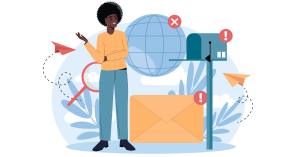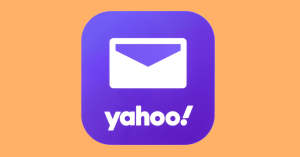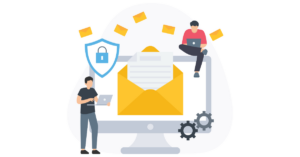If you send marketing emails to Gmail users, it’s time to tighten up your sending practices. As of June 2024, Google rolled out new rules for bulk senders that raise the bar on authentication, unsubscribe functionality, and spam complaint thresholds. The goal: a cleaner inbox experience for users. The consequence for marketers who don’t comply: slower delivery, lower inbox placement, and more messages headed straight to spam.
Here’s a breakdown of what changed and how to make sure your messages keep landing where they should.
Key Updates at a Glance
1. Keep Spam Complaints Under 0.3%
Gmail now expects bulk senders to maintain a spam rate below 0.3%, measured through Google Postmaster Tools.
If your spam rate goes over that threshold, you lose eligibility for Google’s mitigation programs, which can mean delayed sends and reduced inbox placement. High spam rates usually point to list quality or relevance issues.
If you’re using the emfluence Marketing Platform, you already have some safeguards in place—our Deliverability Alerts automatically flag elevated spam complaint rates so you can address issues before they affect your inbox placement.
2. One-Click Unsubscribe Is Required
All bulk senders must offer a visible, one-click unsubscribe option. No buried links. No multi-step opt-out processes. Just a clear, easy way for recipients to remove themselves.
For emfluence users, this requirement is already covered. Our platform automatically includes the required unsubscribe header in every send, so your emails meet Gmail’s one-click unsubscribe standard out of the box.
3. SPF, DKIM, and DMARC Are No Longer Optional
SPF, DKIM, and DMARC authentication are now required. If you’re already using emfluence, this step is built into your setup. We require SPF, DKIM, and DMARC enrollment for all senders and guide you through configuration during onboarding, so your domain is authenticated and ready to send from day one.
Without proper authentication, Gmail may delay, spam-folder, or outright reject your messages. These records are no longer optional. They’re essential.
- SPF (Sender Policy Framework) ensures that only authorized servers can send email for your domain.
- DKIM (DomainKeys Identified Mail) uses cryptographic signatures to verify that your message wasn’t altered in transit.
- DMARC (Domain-based Message Authentication, Reporting, and Conformance) ties it all together, letting you tell receiving servers how to handle messages that fail SPF or DKIM.
If you’re not an emfluence user, now’s the time to make sure these records are correctly implemented. They’re the foundation of good deliverability and without them, Gmail won’t let your messages in the door.
What Happens If You Don’t Comply
Google isn’t issuing warnings, rather they’re enforcing. If your program doesn’t meet the new standards, expect to see:
- Throttled or delayed sends, especially during high-volume periods.
- More messages landing in spam, even for previously engaged recipients.
- Reputation damage that can affect inboxing at other mailbox providers, not just Gmail.
For high-volume senders, even a small dip in inbox placement can translate into significant lost revenue and engagement.
How to Get Compliant (and Stay That Way)
Authenticate Your Domain
If SPF, DKIM, and DMARC aren’t set up or haven’t been tested recently, this should be your first step. Work with your IT team to get records configured correctly, then test them thoroughly.
Review Your Unsubscribe Process
Make sure every email you send includes a clear, one-click unsubscribe link. This is now a hard requirement, not a nice-to-have.
Clean Up Your Lists
List hygiene isn’t optional anymore—it’s a core part of maintaining strong deliverability. Remove inactive or unengaged contacts, suppress addresses that bounce, and avoid purchased lists altogether. Consider double opt-in to confirm interest and reduce spam complaints before they happen.
For emfluence users, our list cleansing feature makes this process a lot easier. You can quickly identify and remove risky or inactive addresses before they start dragging down your sender reputation.
Monitor Your Reputation
Google Postmaster Tools should be part of your regular deliverability check-ins. Keep an eye on spam rates, domain and IP reputation, and error trends. Early detection is key to avoiding bigger issues down the line.
emfluence users have an extra layer of protection. Our deliverability alerts flag unusual patterns—like high bounces, elevated unsubscribes, or rising spam complaints—and link directly to the campaign reports that triggered them. The thresholds adjust over time, but the goal is the same: catch issues early so you can protect your reputation.
Send Content People Actually Want
Compliance alone won’t guarantee inboxing. Gmail rewards engagement, so focus on content that earns opens, clicks, and replies. Good list management and relevant messaging go hand in hand.
Bottom Line
Gmail’s new deliverability requirements mark a clear shift toward holding bulk senders accountable. The senders who succeed will pair strong technical foundations with smart, subscriber-first marketing practices.
If you’re already using the emfluence Marketing Platform, you’re ahead of the curve. From required SPF, DKIM, and DMARC setup to built-in one-click unsubscribe headers, list cleansing tools, and real-time deliverability alerts, many of Gmail’s new requirements are already covered for you.
For everyone else, now’s the time to review your email program—authenticate your sending domain, simplify unsubscribes, clean your lists, and closely monitor your reputation. These are the steps that will keep your emails where they belong: the inbox.
Want to make sure your program checks all the boxes? Let’s talk about your deliverability strategy.


